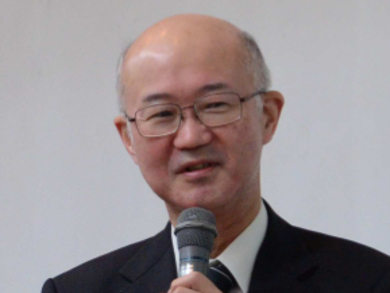Dr. Kate Lawrence, Deputy Editor of ChemistryOpen, talks to Professor Toshiaki Murai, Gifu University, Japan, about his recently published article on fluorescent dyes with acid-responsive absorption and emission characteristics.
Professor Murai, what was the inspiration behind this study?
Our group has been studying the chemistry of thio- and selenocarbonyl compounds for more than a decade. Our research can be classified as curiosity-oriented. Initially, we found two types of new carbon–carbon bond-forming reactions by using thioformamides and secondary thioamides. This revealed the electrophilic character of thioformamides, wherein the carbon atom of a thiocarbonyl group can accept two nucleophiles in a single operation. The other new reaction starts from carbanions adjacent to the nitrogen atom generated from secondary thioamides.
We then envisioned what would happen when we reacted our carbanions with doubly electrophilic thioformamides, and serendipitously formed 5-N-arylaminothiazoles. Interestingly enough, despite the fact that a tremendous number of thiazoles have been isolated and prepared or that synthetic methodologies leading to them are well-developed, our results were the first example of the formation of 5-arylaminothiazoles. Moreover, they adopt structures with electron-donating amino groups that are very different from standard thiazole rings and show rather strong blue fluorescence.
Why was your attention focused on this particular area?
More and more fluorescent molecules are being developed because of their applicability in organic electronics and photonics and as chemo- and biosensors. The majority of these compounds are ring-fused aromatic compounds with generally planar structures.
In contrast, our 5-N-arylaminothiazoles are monocyclic compounds with structures wherein the electron-donating amino groups are deviated from the thiazole ring. Additionally, our compounds follow a convergent synthesis. In fact, more than 60 derivatives have been prepared in our lab over the last five years. No cross-coupling reactions requiring heavy metals are used, and only organolithium reagents are necessary. This library of compounds shows fluorescence from blue to orange as well as fluorosolvatochromism, and a reversible one-electron oxidation can be seen in the cyclic voltammogram.
Following this, we shifted to explore the stimuli-responsive properties of our compounds. One of the stimulus categories involved the use of acids and bases. However, 5-N-arylaminothiazoles are not as basic as known thiazoles. We then introduced a pyridyl group to the thiazoles as an anchor that accepted acids.
What is the main significance of your results?
Changes in the spectroscopic properties of molecules upon the addition of Brønsted acids have often been observed and studied, whereas the use of Lewis acids in this sense is highly rare. In particular, not only the formation of the 1:1 complexes between our thiazoles and boranes, but also the generation of white-light emission had not yet been achieved, as far as we know.
How long did this investigation take?
The protocol for this reaction was initially found in 2008. The research had been focused on the systematic synthesis and characterization of the compounds for the initial five years. Approximately three years ago, a Ph.D. student, Kirara Yamaguchi, the first author of the paper, shifted our research from static studies of the compounds to their dynamic behaviors. This enabled us to enter more interdisciplinary science fields.
How will you follow up on this discovery?
White-light emission with single molecules is currently a challenging theme. To establish applicable systems, solid-state approaches should be realized. In another respect, we want to further unveil all of the properties of our thiazoles, for example, multi-chromic characteristics.
How do you choose the topics of your research?
I prefer not to work in chemistry fields which many researchers already competitively study. Rather than that, I prefer lonely research fields – much like the “countryside” of research. I hope that the number of researchers and the body of findings in those fields increase over time.
Thank you for the interview.
- Acid-Responsive Absorption and Emission of 5-N-Arylaminothiazoles: Emission of White Light from a Single Fluorescent Dye and a Lewis Acid,
Kirara Yamaguchi, Toshiaki Murai, Jing-Dong Guo, Takahiro Sasamori, Norihiro Tokitoh,
ChemistryOpen 2016.
DOI: 10.1002/open.201600059




